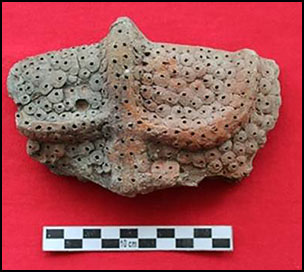Crossref Citations
This article has been cited by the following publications. This list is generated based on data provided by
Crossref.
Bellwood, Peter
2019.
The Spice Islands in Prehistory: Archaeology in the Northern Moluccas, Indonesia.
KATAGIRI, Chiaki
2020.
Shiraho-Saonetabaru Cave Site, Ishigaki Island, Okinawa, Japan, and the Cliff Grave Culture in Southern Islands.
TRENDS IN THE SCIENCES,
Vol. 25,
Issue. 2,
p.
2_48.
Oliveira, Sandra
Nägele, Kathrin
Carlhoff, Selina
Pugach, Irina
Koesbardiati, Toetik
Hübner, Alexander
Meyer, Matthias
Oktaviana, Adhi Agus
Takenaka, Masami
Katagiri, Chiaki
Murti, Delta Bayu
Putri, Rizky Sugianto
Mahirta
Petchey, Fiona
Higham, Thomas
Higham, Charles F. W.
O’Connor, Sue
Hawkins, Stuart
Kinaston, Rebecca
Bellwood, Peter
Ono, Rintaro
Powell, Adam
Krause, Johannes
Posth, Cosimo
and
Stoneking, Mark
2022.
Ancient genomes from the last three millennia support multiple human dispersals into Wallacea.
Nature Ecology & Evolution,
Vol. 6,
Issue. 7,
p.
1024.
Ono, Rintaro
Sofian, Harry Octavianus
Fuentes, Riczar
Aziz, Nasrullah
and
Pawlik, Alfred
2023.
The Goa Topogaro complex: Human migration and mortuary practice in Sulawesi during the Late Pleistocene and Holocene.
L'Anthropologie,
Vol. 127,
Issue. 3,
p.
103155.
Yuniawati-Umar, Dwi Yani
Sajekti, Andjarwati Sri
and
Alamsyah, Nico
2023.
Proceedings of the 3rd International Conference on Linguistics and Cultural (ICLC 2022).
Vol. 756,
Issue. ,
p.
99.
Yang, Zhangqiaochu
Zhang, Qiang
Zhu, Chao
Xiao, Yuni
Sun, Bo
Zeng, Wen
Guo, Lin
Yi, Zhixing
Fan, Rong
and
Zhao, Yongsheng
2023.
Postmortem treatment of preterm infants at the Gangshang site during the Late Neolithic period, Shandong Province, China.
International Journal of Osteoarchaeology,
Vol. 33,
Issue. 2,
p.
297.
Gaffney, Dylan
and
Tanudirjo, Daud
2024.
Forty Years in the South Seas: Archaeological Perspectives on the Human History of Papua New Guinea and the Western Pacific Region.
p.
359.
Gaffney, Dylan
Tanudirjo, Daud
Mas’ud, Zubair
Djami, Erlin Novita Idje
Matcap, Abdul Razak
and
Russell, Tristan
2025.
West New Guinea: Social, Biological, and Material Histories.
p.
171.
